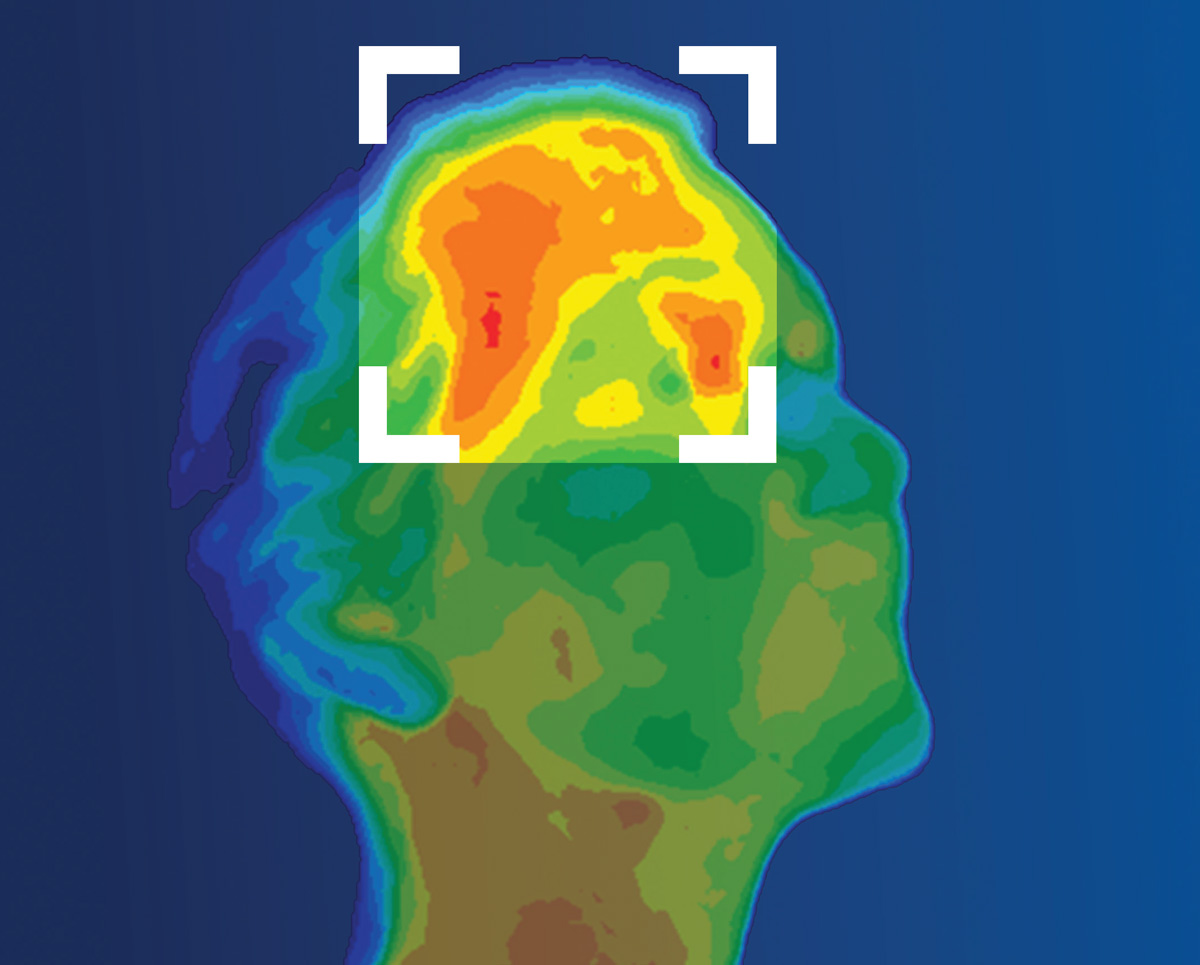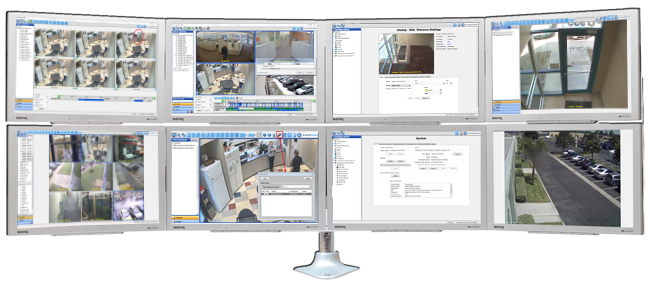-a49163b95043adcaaa10cb2e7bd27240fef082f9.png?v=03312021180602)
Integration is a philosophy
Centralized management on a robust, hardened platform can save time, lives, and money
Top reasons for integrated security
- Enhance safety
- Increase efficiency
- Deter crime
- Reduce liability
- Save money
One of the most profound lessons of this past year is that innovation can be borne by some of life’s most significant challenges. As the nation works toward reopening, our businesses, schools, healthcare facilities, etc. are implementing some of those innovations to help protect employees, comply with guidelines, and create safer, more productive environments. These new safe-space strategies may last beyond the ‘triage’ timeframe to become permanently adopted solutions for businesses to enhance safety and efficiency.
One challenge that is arising is in the integration of these new technologies into an organization’s existing operational and security ecosystem.
The addition of new systems designed to enhance protection can actually add security gaps and holes if they are not well integrated. In this article, we review some of the powerful solutions that are being added to enhance protection, typical applications and use cases for those solutions, and integration best practices to ensure holistic security throughout the enterprise.
Only time will tell how permanent some of the newly adopted health and safety strategies are. One of the most visible changes has been in wearing face coverings - it’s well documented that wearing face masks can slow the spread of the coronavirus (SARS-CoV-2) that causes COVID-19.
- exacqVision leverages its powerful face mask detection feature to automatically monitor and search for “No Mask Detected” events.
- Illustra Pro Thermal EST cameras can measure skin temperatures with a ±0.2°C / 0.4°F accuracy tolerance at an effective distance of 1 to 2 meters (3.3 to 6.6 feet)

While face mask mandates vary by state, the Centers for Disease Control and Prevention (CDC) recommends people wear masks in public settings, at events and gatherings and anywhere they will be around other people. In busy environments like multi-occupant buildings or hospital and school campuses where hundreds of people enter a lobby at the same time, it can be difficult to monitor who does or does not have a face covering, so businesses are employing technologies that automatically monitor compliance. These AI-powered solutions enhance situational awareness and allow security personnel to quickly mitigate any potential breaches by receiving automatic alerts through their video management system.
Likewise, rather than hiring full time staff to physically take temperatures which can slow the start of the workday, unobtrusive thermal cameras are being installed in lobbies to scan for elevated skin temperatures as staff and visitors enter the building. Facial recognition solutions are being adopted more quickly than ever (expected to grow to USD 8.5 billion by 20251), partly because of their ability to provide a frictionless – and contactless — experience.
These new solutions add a much-needed layer of safety but should not exist as silo systems. Asking an already overtaxed security and safety team to toggle between new system interfaces and those they already have in place is asking too much and can make an environment susceptible to ‘monitoring fatigue’.


According to some estimates, reopening schools could reverse at least $350 billion in lost revenue and growth.3
While face mask detection and temperature scanning solutions may be new additions to a business’ security ecosystem, they join a suite of technologies that are already in place to protect our most vulnerable people and places.
Schools and healthcare facilities
Education and healthcare have been hard hit during the pandemic. Students and educators were forced to adopt remote learning almost overnight, stressing mental health and learning abilities, while physicians reported an alarming 49% drop in adult primary care visits2 increasing the possibility of long-term health consequences.
As communities resume in-person learning and healthcare visits with the necessary COVID-19 precautions – face coverings, social distancing, temperature taking, etc. – it’s important to consider their impact on the other solutions that may be already in place.
Security events often occur where cameras cannot be used, such as locker rooms or restrooms.
exacqVision’s searching capabilities include powerful timeline, list view, and thumbnail search tools to help security personnel:
- Build context around the sensor event from cameras in the vicinity
- Conduct investigations on recorded video and audio across multiple cameras
- Leverage event data from intrusion and access control systems to improve search results
- Bookmark and export important video clips
Protecting critical infrastructure during these unprecedented times can call for additional measures to maintain the services and functions we depend on daily. While there have always been big investments in video and physical access control systems, physical perimeter security hasn’t always received the same attention. This is beginning to change, however, as physical attacks continue to increase, and as AI solutions become more embedded into integrated security strategies.
Information technology and telecom, energy, banking and finance, transportation and border security, water, and emergency services. These critical infrastructures share a common threat of vandalism, theft and attack coupled with concerns for regulatory compliance and the liability associated with trespassing. By adding advanced perimeter security solutions, these sites can detect intruders before they breach the perimeter.
Radar detection solutions that warn of fast-approaching vehicles coupled with license plate recognition solutions can provide both advanced warning of an imminent threat and the analytics to quickly react to and mitigate potentially dangerous situations. AI-powered heat mapping and behavior analysis tools can also amplify a security team’s ability to proactively assess threats through crowd-gather alerts, wrong-way travel, and other data-driven information.
- 2013 The Metcalf Sniper Attack. No arrests have ever been made in one of the most alarming physical attacks against the electric grid. The attack on the PG&E Metcalf substation raised Congressional concern which led to the Commission directing NERC to develop a physical security standard.
- 2013 The Arkansas grid attacks. In a period of a few weeks, attacks occurred against two transmission lines and a substation. The perpetrator was eventually arrested but the attacks demonstrate the extreme vulnerability of transmission lines and substations to physical attack.
- 2014 The Hydro-Québec attack by airplane. While the details of the attack are under court seal, the attacker used an airplane to short out two major transmission lines, cutting off power to over 180,000 customers. This incident demonstrated the vulnerability of the grid to an attack by air.
SaaS is taking over the cloud computing market.
Gartner predicts that the service-based cloud application industry will be worth $143.7 billion by 2022 — a level of growth that will shape SaaS trends in 2021.
source: Datapine
The power of integration is not a novel concept. But there is growing realization that not all are equal when it comes to how well a platform can handle the many events and alarms fed through its interface. The wider adoption of AI-powered solutions has shown companies that it’s possible — and often preferable — to run SaaS solutions and online data analysis without needing to install and manage applications on their own computer systems and data centers. As such, there is a brighter spotlight on the need for cloud-based, centralized management of all the solutions that are part of an organization’s holistic security ecosystem.

Integration is a philosophy.
Our industry is filled with solutions that can help protect people and sustain operations to avoid another catastrophic economic shutdown. But solutions operating in a silo creates scattershot systems that cause late, disconnected responses to emergency situations.
And, while there is merit to the approach of avoiding ‘all eggs in one basket’ when it comes to business-enabling technologies, that should not be the strategy for an integrated security solution. A robust, hardened video management solution from a single provider who offers support, version control, platform oversight can assure the strength of integration which can, in turn, save time, lives, and money.
The power of integration
Having a security infrastructure that can streamline operations from a collaborative platform unifies efforts so schools, healthcare systems, and critical infrastructures can respond quickly. exacqVision is a proven, open-platform VMS with support for more than 4,000 surveillance cameras and easily integrates with third-party security technologies.
Our products are gated, analyzed, tested, and required to meet or exceed the rigorous standards of the Johnson Controls Cyber Solutions Product Security Program. Our security mindset begins at the initial design concept and is supported through deployment, including a rapid incident response to meet the comprehensive and evolving cybersecurity environment.
- https://www.marketwatch.com/press-release/facial-recognition-market-growing-at-a-cagr-172-key-player-thales-e-security-nuance-communications-microsoft-amazon-ayonix-2020-12-14
- Mehrotra A, Chernew M, Linetsky D, Hatch H., The impact of the COVID-19 pandemic on outpatient visits: a rebound emerges. To the Point (blog), The Commonwealth Fund. Updated May 19, 2020. doi: doi.org/10.26099/ds9e-jm36
- https://www.usatoday.com/story/opinion/2021/01/24/re-opening-schools-precautions-and-testing-column/6661567002/
- School Shooting Tracker: Counting school shootings since 2013 (nbcnews.com)
- EDUCBA. Artificial Intelligence vs Human Intelligence. https://www.educba.com/artificial-intelligence-vs-human-intelligence/